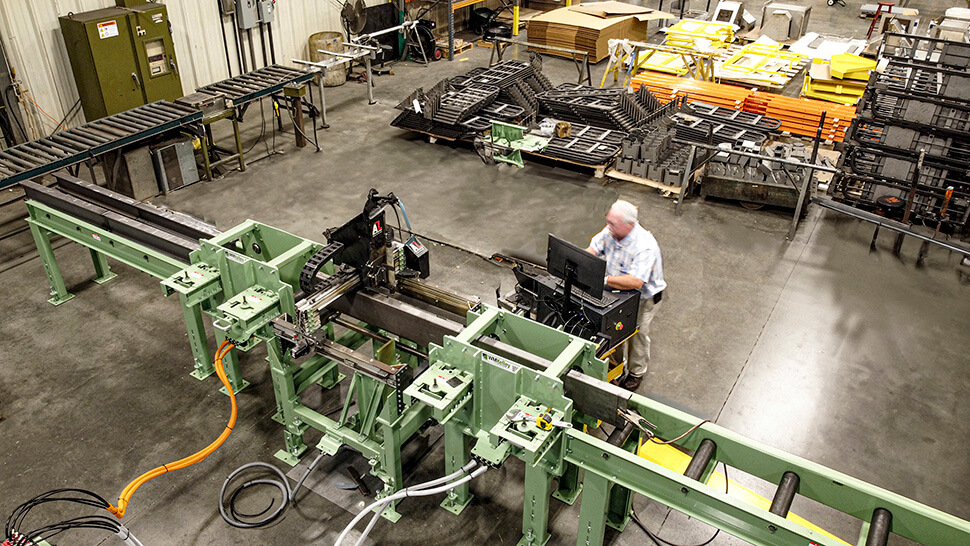How do you remove the fat from an operation?
Look through the applications Lauyans EPS has designed and produced for our clients over the years. Many are conveyors that move products from one part of the production process to the next one.
Others are work cells that allow a specific operation to be performed in the process as product passes through the cell.
Here is an example of a work cell designed for a specific operation in the process.

A globally recognized manufacturer of forklifts performs a series of operations that produce the masts. The masts support the forks. Masts can be configured so forklifts will support various loads. The masts reach heights required by the end user’s activities.
Each mast is made up of several sections of beams that telescope as the load is raised. Extensive machining is necessary to prepare each beam for assembly.
One operation requires that two notches be machined in the thick flanges of each individual beam. It’s an expensive operation; a machining center must remove a ≈ (2” x 8”) notch in a flange that is almost 1” thick.
The client came to Lauyans EPS seeking a way to reduce the cost of machining these notches. They had an idea. They needed a way to make it work as part of their production process.
Lauyans EPS took their idea and made it functional.
Cutting a huge piece of metal out of the edge of a beam can be more quickly accomplished using a plasma cutter. After roughly 80% of the notch is removed, a machine center can smooth the edges. Projected savings were significant.
W.M. Kelley engineers designed a stand that supports a computer-controlled, 3-axis plasma cutter over a non-powered roller conveyor.
The stand has a pneumatic stop that is raised and lowered to precisely locate the beam lengthwise as it is pushed into the process. After the operation, the beam passes on through to the next operation.
The incoming conveyor includes manually adjustable side stops to locate the face of the beam accurately for the cutting operation. Pneumatic stops opposite the manual stops extend to clamp the beam securely against the manual stops. These retract following the operation. The beam is moved to the next part of the process. Another piece is loaded into position.
Success! Lauyans EPS hit the goal. The savings? 2 ½ – 3 minutes per notch. The ROI certainly justifies the project.
Do you have operations that can be improved to save money? To make the operation safer? Or to ease the physical demands on the operators? We would like to talk with you about your ideas.
Will you contact us?
